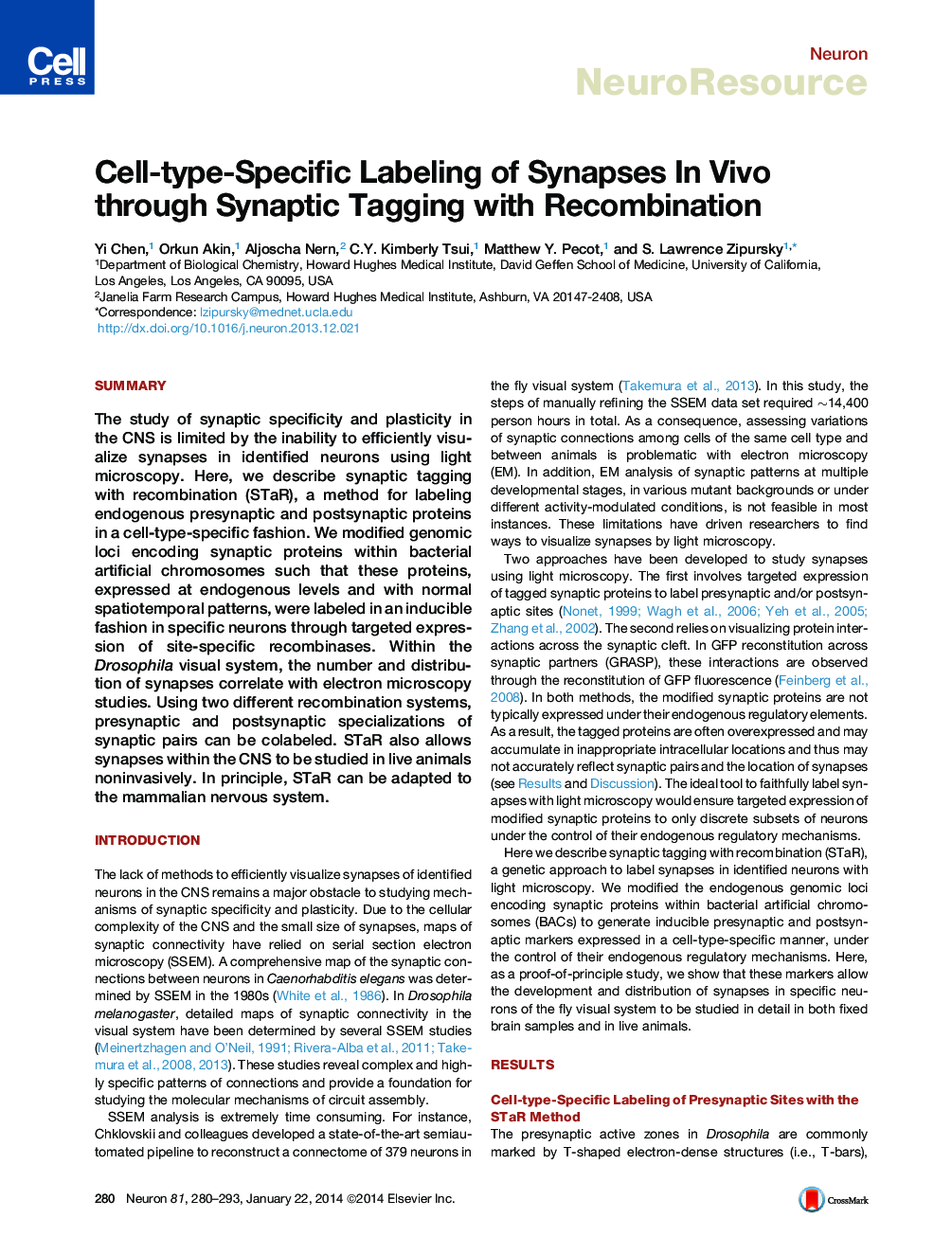| Article ID | Journal | Published Year | Pages | File Type |
|---|---|---|---|---|
| 4321193 | Neuron | 2014 | 14 Pages |
•STaR labels endogenous synaptic proteins in specific cell types via recombination•Synapses in specific neurons labeled by STaR correlate well with EM studies•Presynaptic and postsynaptic specializations can be colabeled in synaptic pairs•STaR allows synapse formation to be studied in fixed samples and in live animals
SummaryThe study of synaptic specificity and plasticity in the CNS is limited by the inability to efficiently visualize synapses in identified neurons using light microscopy. Here, we describe synaptic tagging with recombination (STaR), a method for labeling endogenous presynaptic and postsynaptic proteins in a cell-type-specific fashion. We modified genomic loci encoding synaptic proteins within bacterial artificial chromosomes such that these proteins, expressed at endogenous levels and with normal spatiotemporal patterns, were labeled in an inducible fashion in specific neurons through targeted expression of site-specific recombinases. Within the Drosophila visual system, the number and distribution of synapses correlate with electron microscopy studies. Using two different recombination systems, presynaptic and postsynaptic specializations of synaptic pairs can be colabeled. STaR also allows synapses within the CNS to be studied in live animals noninvasively. In principle, STaR can be adapted to the mammalian nervous system.
